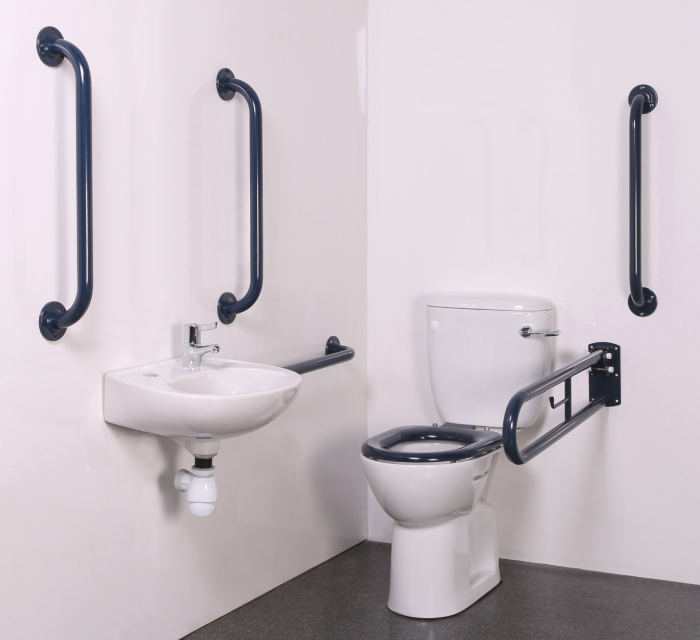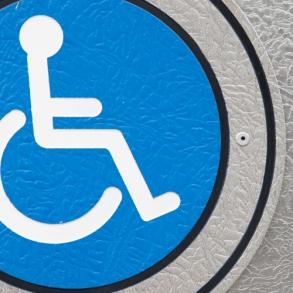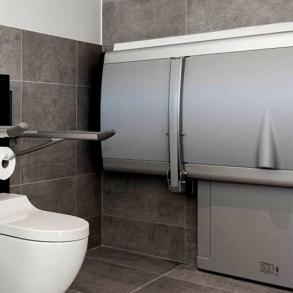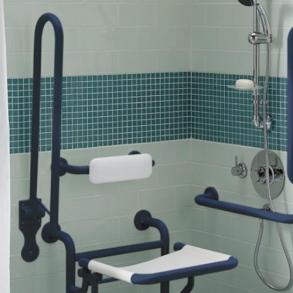So you’re tasked with renovating a commercial wash space inside a heritage property. It can be a stressful time with the constant worry of adhering to meticulous regulations while still maintaining the original features and look of the building. However, it needn’t cause concern and in actual fact, when working on a listed building, you sometimes have a greater potential to create something unique and memorable.
Embrace original features
From deep-set chimney breasts, to exposed cast iron pipework, original features can be a great way to add character to your commercial washroom. Rather than covering them up, or seeing that stone step in a doorway as an irksome problem, take time to see how it can be highlighted and embraced. Cast iron radiators have become treasured, antique items in recent years and if you are lucky enough to have them existing, perhaps finding a way to work around or with them is going to be an advantage, rather than a hindrance. We recently worked on a National Trust property where we salvaged some of the original bells from the estate and up-cycled them into light fittings. It’s often this kind of small attention to detail that brings a room back from the clinical, corporate look of a modern washroom to one that has timeless charm and character.
Sticking to existing colour schemes
The colour scheme in an old property can be just as crucial to its atmosphere as the building itself. For instance, in some heritage properties, the ceiling might be painted a dark colour, particularly in old servants quarters, and wall colours often only rise half way up the wall – sometimes including a wooden paneling. This can all be incorporated into a modern commercial washroom without having to break the bank. Solid grade laminate (SGL) is a dynamic material that’s not only completely impervious to water, but comes in an incredibly wide range of colours. We can also work with this material to custom specifications meaning any obscure dimensions can be worked to exactly for a seamless ‘been-here-the-whole-time’ finish.
If you you’d like to talk to us about making your new washroom blend in with an existing, or strict property colour scheme, just give us a call on 01202 650900
Doc-M might not apply
With all the best intentions in the world, sometimes, you just can’t comply with Doc-M, and that’s ok. For instance, you might have a washroom up a tight narrow stairwell that’s inaccessible for wheelchair users, or maybe the dimensions of the room stops you from being able to install a full Doc-M pack. The idea in these circumstances is to make the washroom as accessible as possible. Some customers have put in an ambulant disabled washroom cubicle, which is a slightly larger toilet cubicle with an outward opening door and some grab rails.
If you would like more information on Document M, you can read our feature on it here. Or for more detailed advice relating to your specific property, give us a call for a no-obligation chat on 01202 650900
Go bespoke
We mentioned earlier how we sometimes up-cycle original features in heritage properties, but you should never overlook the opportunity to go bespoke. Cubicle doors don’t have to be made from laminates and flat, plain panels. In some cases we’ve installed wooden paneled doors that have been painted with a heavy duty, moisture resistant paint. Tongue and groove wooden doors actually work really well in old properties, with traditional brass fittings to add that important attention to detail.
Mirrors are another bespoke area, which can really bring a homely tone to the room. Many commercial washrooms have large format, wall-covering mirrors. However, individual mirrors hung above each wash basin really add character and by using custom frames you add a touch of individuality to the room.
Modern features worth including
You may be going for some traditional features in the washroom, but there are several modern washroom fittings that are worth integrating. Sensor taps are slim, unobtrusive and easy to maintain. They remove the risk of users accidentally leaving the taps on, which can cause flooding, and reduce the spread of bacteria significantly.
While leaving original pipework exposed may be a sound option in a heritage property, modern pipework is unlikely to look as good. For this reason, it’s a good idea to consider a custom-built vanity unit to both house pipework and waste, but also to carry wash basins. Within this unit you also have the ability to house a waste bin with a waste chute installed on the counter above.
Sensor activated hand dryers are another good investment. Some of the best modern versions are sleek, slender and deliver fast drying power – which means users are in and out of the washroom much quicker. Sensor hand dryers help in two ways; they improve hygiene as users never need to physically touch the item, and paper hand towel waste is completely removed.
The importance of design and planning ahead
It goes without saying that well thought out design and preparation is incredibly important when refurbing a commercial washroom - doubly so with heritage properties. From uneven walls and crooked original features, to obscure dimensions and historic colour schemes, you want to honour the building your working with and make sure you don’t compromise the overall character.
We have extensive experience in working inside heritage properties and offer a full design process, delivering you 3D images of exactly how your commercial washroom will look ahead of any works actually being carried out. This makes sure everything is functional from the sewage and waste capabilities, right through to the end user experience of the finished washroom.
As always, our team are at the end of the telephone for all your queries and questions and have a wealth of knowledge they’re happy to share with you. So if you need some guidance, or would like to talk over your options, you can give them a call on 01202 650900.




